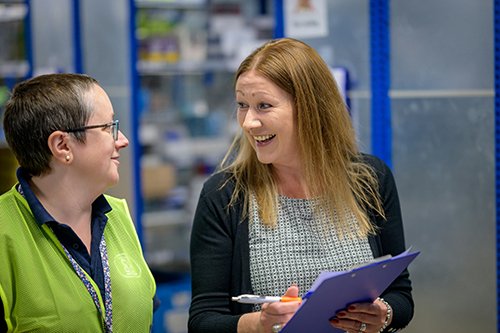Site Safety in Schools
Making sure that school sites are secure from a safeguarding perspective
As the (hopefully!) better weather of spring approaches, and pupils start to spend more time outdoors, this is a good time for DSLs to get out and around your school site and consider the physical safety and wellbeing of your pupils. Over the next week, we would recommend that you don suitable footwear, get out of the office, and consider site safety.
This can seem overwhelming but remember your site team will look after all aspects that come under the remit of Health and Safety, so this isn’t about Legionnaires testing and asbestos reports. Your role as DSL is to consider the site from a pupil’s perspective and the following points should help you to make a positive start:
The Perimeter
Mythology has developed over the years about what is expected and what is not. We would suggest that you apply the “I was just out walking the dog test….”. In an ideal world, all our school perimeters would be fenced with modern, unclimbable barriers. This is often not the case as schools have neighbours or old fencing etc which make this almost impossible. Our test is, could a member of the public walk onto site and pretend that they had got there by accident? “Oh, I was just out walking the dog and I didn’t realise this playing field belonged to the school.” If the answer is yes, your site is not secure.
Fencing and gates (especially electric ones) can be incredibly expensive, and you may have to apply for additional funding over the course of an academic year or so. However, signage is much cheaper and faster to implement so, in the meantime visible signs stating that this is private property should make it clear to members of the public where they can and can’t go. This is especially important if you have a public right of way across school land. You also need to make sure that clear protocols are in place so that pupils are always supervised in areas that could, potentially, be accessed.
Hot Spots
If you imagine that you are a Year 7 pupil and wander around the school you might have concerns that, as an adult, you wouldn’t. Are there parts of the school where poor behaviour makes it more unsafe than other areas? Are areas like drama studios and changing rooms appropriately supervised during social times? It is often the case that pupils are trusted to get on with activities whilst staff finish elsewhere. Are there areas of the school that are in effect no-go areas for some students because of the presence of others? If you were an LGBTQIA+ pupil, do you have a safe space? Is everywhere equal accessibility to SEND pupils?
With this pupil focused consideration, possibly create a "hot spot" map, showing potential high risk areas of the school to share with other staff to encourage greater supervision etc.
Playground Zoning
Often in primary schools, children aged between 4 and 11 share one playground. This can lead to some wonderful co-operative play. However, if you have a group of larger, older children charging around with a football it can be very off putting for younger, quieter pupils. It can be even more subtle than that, as older children can dominate play equipment or dictate friendship groups. We have also seen secondary settings where boisterous pupils behave in unsafe ways during social times, and their physicality can be a risk to others.
If you feel on review that any of these situations resonate, you may wish to consider zoning the playground, for age group or activity.
Further help with securing your site
We hope this provides a great start to your safeguarding “walks. If there are any site security issues that you have particular concerns about and would like to discuiss further, please get in touch.

